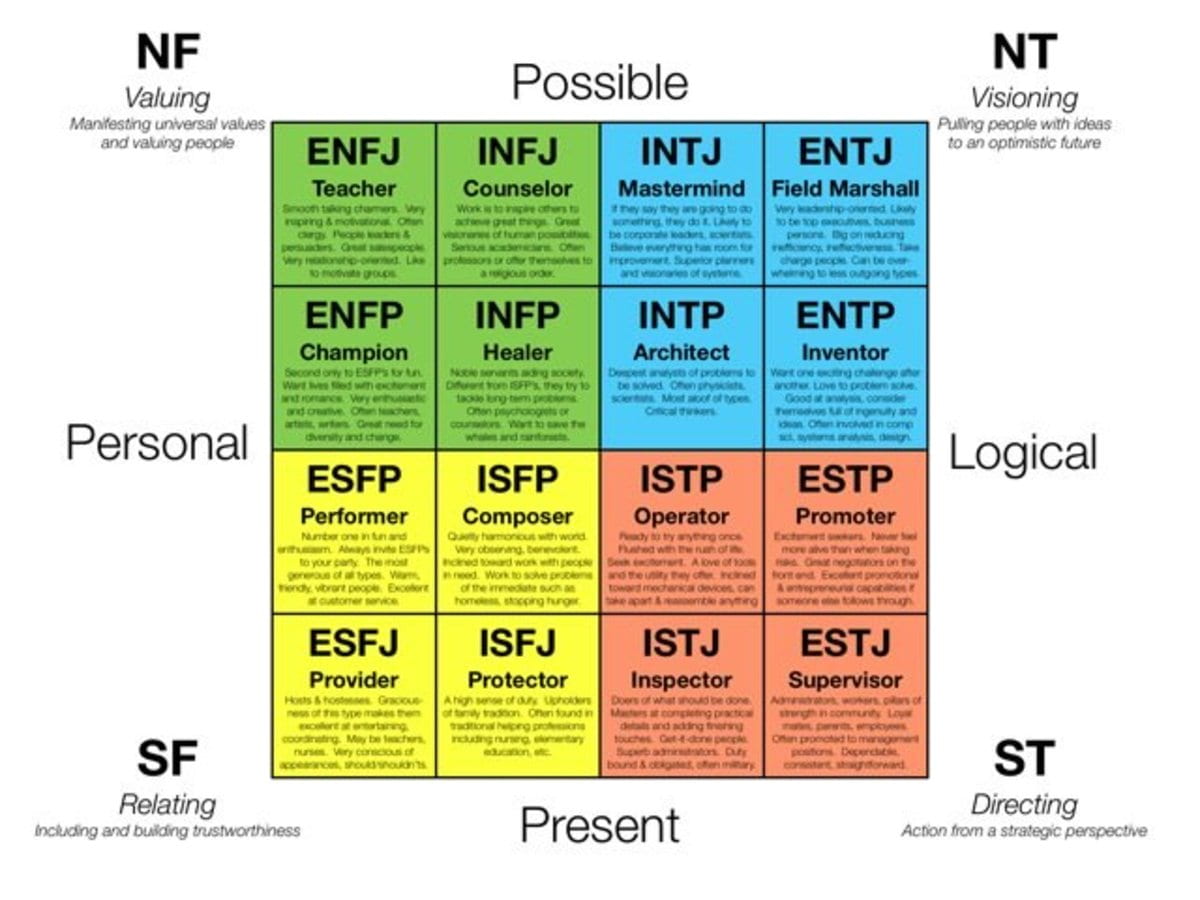Regardless of your proximity to psychological theory, I’d bet almost anything that you’ve heard of or taken a personality test. Broadly speaking, a personality test is a tool that psychologists and psychiatrists use to assess human personality. These tests assess trends and patterns of human behavior across a variety of situations.

Despite its lack of scientific reliability and validity, the Myers-Briggs personality test assigns the user a personality type that is supposed to assess four personality scales (extraversion/introversion, sensing/intuition, thinking/feeling, judging/perceiving). If you’re interested in taking a scientifically valid personality test, considering taking the HEXACO personality index.
Regardless of its scientific validity, all personality tests attempt to reveal something about human nature. The HEXACO test reveals information about an individual’s propensity towards traits such as emotionality, extraversion, and conscientiousness. The Holtzman Inkblot test can reveal a variety of information about an individual’s personality.

And while there are many personality tests that have descriptive utility, I think there is room for significant improvement within the development of personality tests. As such, I will be developing my own personality index modeled through an understanding of the Imagined and the Actual.
If we understand that the Imagined and perception of the Actual vary from person to person, then we can create questions that categorize and assess these differences. Furthermore, if we presuppose the validity of the Imagined and Actual as constructs for understanding the human psyche, then this test could be useful in clinical settings. Not only could this test reveal a lot about one’s propensity towards certain mental illnesses, but psychologists and psychiatrists could use it to specialize psychotherapy sessions.
Additionally, if the results of the test do correlate to different types of mental illnesses, then it would lend credence to the idea that the Imagined and Actual are useful constructs to understand the human mind.
Primarily, the test will attempt to assess one’s Imagined and how easily one is able to adapt their Imagined Self, Imagined Other, etc.
The development of this test is still in its preliminary stages, and I still have a lot of reading that I would like to do beforehand. However, if you’re interested in following the development of this project, you should keep an eye out for my Schreyer’s thesis. Or you can always reach out about any questions or suggestions you might have about the project. As always, if you have any questions about the content here, I encourage you to leave a comment and I will respond as soon as possible.
Leave a Reply